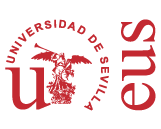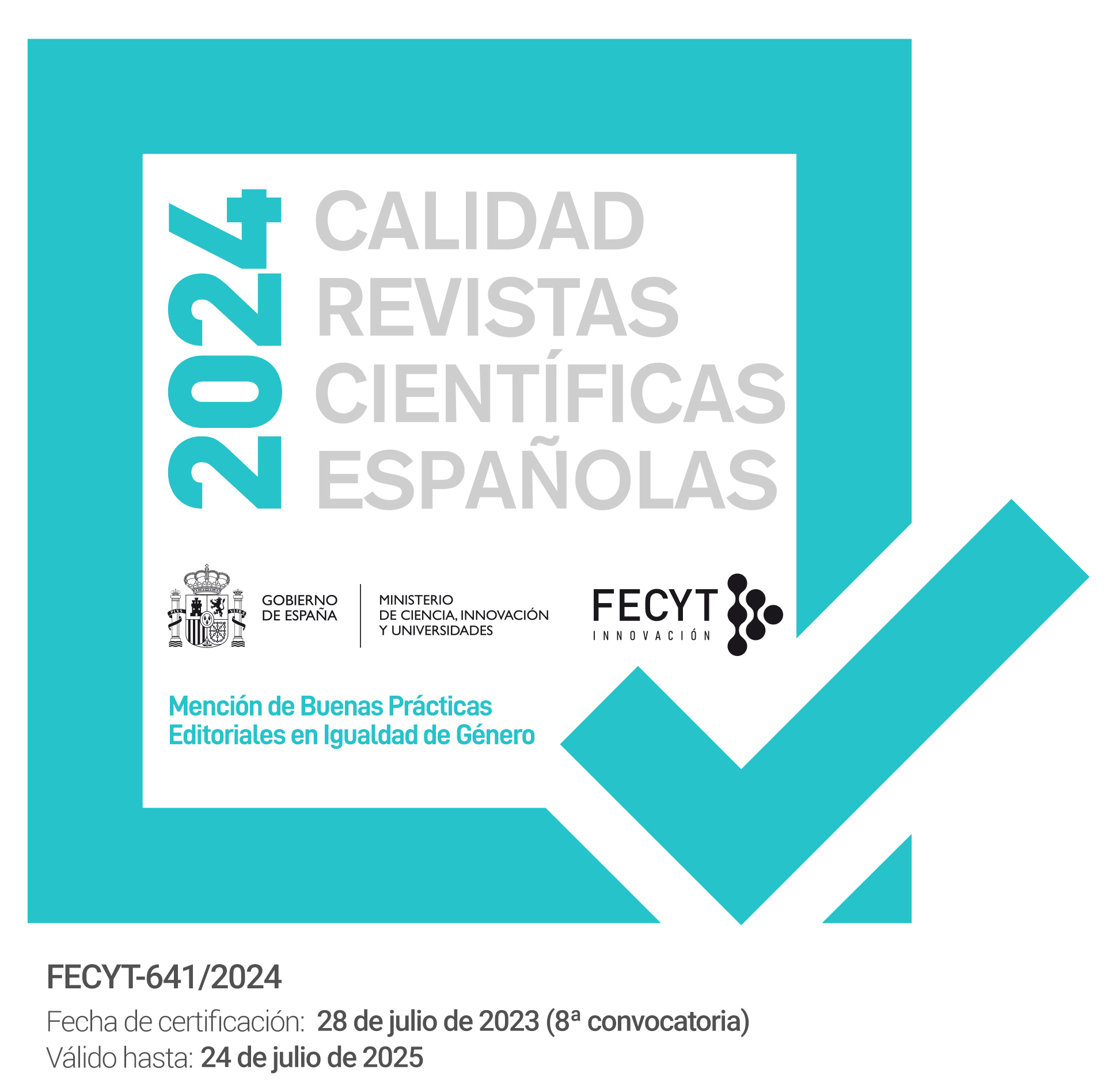Sevilla versus madrid. How university students from central-northern spain view the castilian and andalusian language varieties (results from the PRECAVES XXI project)
DOI:
https://doi.org/10.12795/PH.2021.v35.i01.03Keywords:
linguistic attitudes, varieties of Spanish, Andalusian, false pair technique, PRECAVES XXI ProjectAbstract
This work, which is part of the activities of the PRECAVES XXI Project, presents the results of the surveys carried out among young university students from the central-northern region of the Iberian Peninsula who are studying philology or a master’s degree in Spanish as a Foreign Language. These degrees are professionally linked to the teaching of the Spanish language and its varieties and, therefore, to the transmission of linguistic ideologies. The objective is to present the perception and beliefs that the respondents have about their own linguistic variety —Central-Northern Spanish—, and the Andalusian variety. Specifically, confirmed data are provided on the two varieties under the following heads: 1) consideration as a model variety; 2) degree of recognition or identification of each variety; 3) perception of similarity with respect to the own variety; 4) assessment of the varieties through direct evaluation (cognitive and affective aspects) and indirect evaluation (the person, the region and the culture).
Downloads
References
Alvar, M. (1990). A vueltas con el seseo y el ceceo. En M. Alvar, Norma lingüística sevillana y español de América (pp. 45-60). Ediciones de Cultura Hispánica.
Cestero Mancera, A. M. y Paredes García, F. (2015). Creencias y actitudes hacia las variedades normativas del español actual: primeros resultados del Proyecto PRECAVES-XXI. Spanish in Context, 12(2), 255-279. https://doi.org/10.1075/sic.12.2.04ces
― (2018a). Creencias y actitudes hacia las variedades cultas del español actual: el proyecto PRECAVES XXI. Boletín de Filología, 53(2), 11-43. https://doi.org/10.4067/S0718-93032018000200011
― (2018b). Creencias y actitudes de los jóvenes universitarios del centro-norte de España hacia las variedades cultas del español. Boletín de Filología, 53(2), 45-86. https://doi.org/10.4067/S0718-93032018000200045
Chiquito, A. B. y Quesada Pacheco, M. Á. (Eds.). (2014). Actitudes lingüísticas de los hispanohablantes hacia el idioma español y sus variantes. University of Bergen.
Fernández Martín, E. (2016). Sevilla frente a Madrid en el siglo XVIII: Los madrileños adoptivos (1790), de Antonio González de León. CSIC.
Frago Gracia, J. A. (1993). Historia de las hablas andaluzas. Arco/Libros.
Lambert, W. E., Gardner, R. C., Olton, R. y Tunstall, K. (1968). A Study of the roles of attitudes and motivation in second-language learning. En J. A. Fishman (Ed.). Readings in the Sociology of Language, 473-491. Mouton. https://doi.org/10.1515/9783110805376.473
López Morales, H. (1989). Sociolingüística. Gredos. https://doi.org/10.1515/ijsl.1989.77.55
Méndez García de Paredes, E. y López Serena, A. (2019). ¿Puede hablarse y desde cuándo de una norma para Andalucía occidental? En V. Codita (Ed.) y E. Bustos y J. P. Sánchez Méndez (Coords.). La configuración histórica de las normas del castellano (pp. 79-108). Tirant Lo Blanch.
Menéndez Pidal, R. (1962). Sevilla frente a Madrid: Algunas precisiones sobre el español de América. En Miscelánea homenaje a André Martinet: Estructuralismo e historia. Vol. III, 99-165. Universidad de La Laguna.
Moreno Fernández, F. (2005). Principios de sociolingüística y sociología del lenguaje. 2.ª edición. Ariel.
― (2005). (2009). La lengua española en su geografía. Arco/Libros.
Moreno Fernández, F. y Moreno Fernández, J. (2004). Percepción de las variedades lingüísticas de español por parte de hablantes de Madrid. Lingüística Española Actual XXVI(1), 5-38.
Navarro Tomás, T. (1918 [1991]). Manual de pronunciación española. CSIC.
― (1935). El acento castellano. Discurso de ingreso en la RAE. Real Academia Española. https://doi.org/10.2307/332144
Paredes García, F. y Cestero Mancera, A. M. (2018). Percepción de las variedades cultas del español por parte de hablantes del centro norte de España según los datos del Proyecto PRECAVES XXI: el español ejemplar y la variedad propia. Oralia, 21(1), 87-112.
Valdés, Juan de (1535? [1972]). Diálogo de la lengua. Edición, estudio preliminar y bibliografía de Antonio Comas. Bruguera.
Villena Ponsoda, J. A. y Vida Castro, M. (2017). Variación, identidad y coherencia en el español meridional. Sobre la indexicalidad de las variables convergentes del español de Málaga. Lingüística en la red (Linred), Monográfico Procesos de variación y cambio en el español de España. Estudios sobre el corpus PRESEEA, 1-32 http://www.linred.es/monograficos_pdf/LR-monografico15-articulo1.pdf
Yraola, A. (2014). Actitudes lingüísticas en España. En A. B. Chiquito y M. Á. Quesada Pacheco (Eds.), Actitudes lingüísticas de los hispanohablantes hacia el idioma español y sus variantes (pp. 551-636). Universidad de Bergen. https://bells.uib.no/index.php/bells/article/view/685
Published
How to Cite
Issue
Section
License
Copyright (c) 2021 Philologia Hispalensis

This work is licensed under a Creative Commons Attribution-NoDerivatives 4.0 International License.
The printed and electronic editions of this Journal are edited by the University of Seville Editorial, and the source must be cited in any partial or total reproduction.
Unless otherwise indicated, all the contents of the electronic edition are distributed under a license of use and distribution “Attribution-NonCommercial-NoDerivatives 4.0 International” . You can view the informative version and the legal text of the license here. This fact must be expressly stated in this way when necessary.
Authors who publish in this journal accept the following conditions:
- The author/s retain copyright and grant the journal the first publication right, and accept it to be distributed with the Creative Commons By NC ND 4.0 licence, which allows third parties to use what is published whenever they mention the authorship of the work and the first publication in this journal and whenever they do not make commercial use and reuse it in the same way.
- Authors can make other independent and additional contractual agreements for the non-exclusive distribution of the article published in this journal (e.g., include it in an institutional repository or publish it in a book) provided they clearly indicate that the work was published for the first time in this journal.
Authors are allowed and recommended, once the article has been published in the journal Philologia Hispalensis (online version), to download the corresponding PDF and disseminate it online (ResearchGate, Academia.edu, etc.) as it may lead to productive scientific exchanges and to a greater and faster dissemination of published work (see The Effect of Open Access).
Accepted 2020-06-21
Published 2021-12-21
- Abstract 330
- PDF (Español (España)) 287
- HTML (Español (España)) 157
- XML (Español (España)) 127







